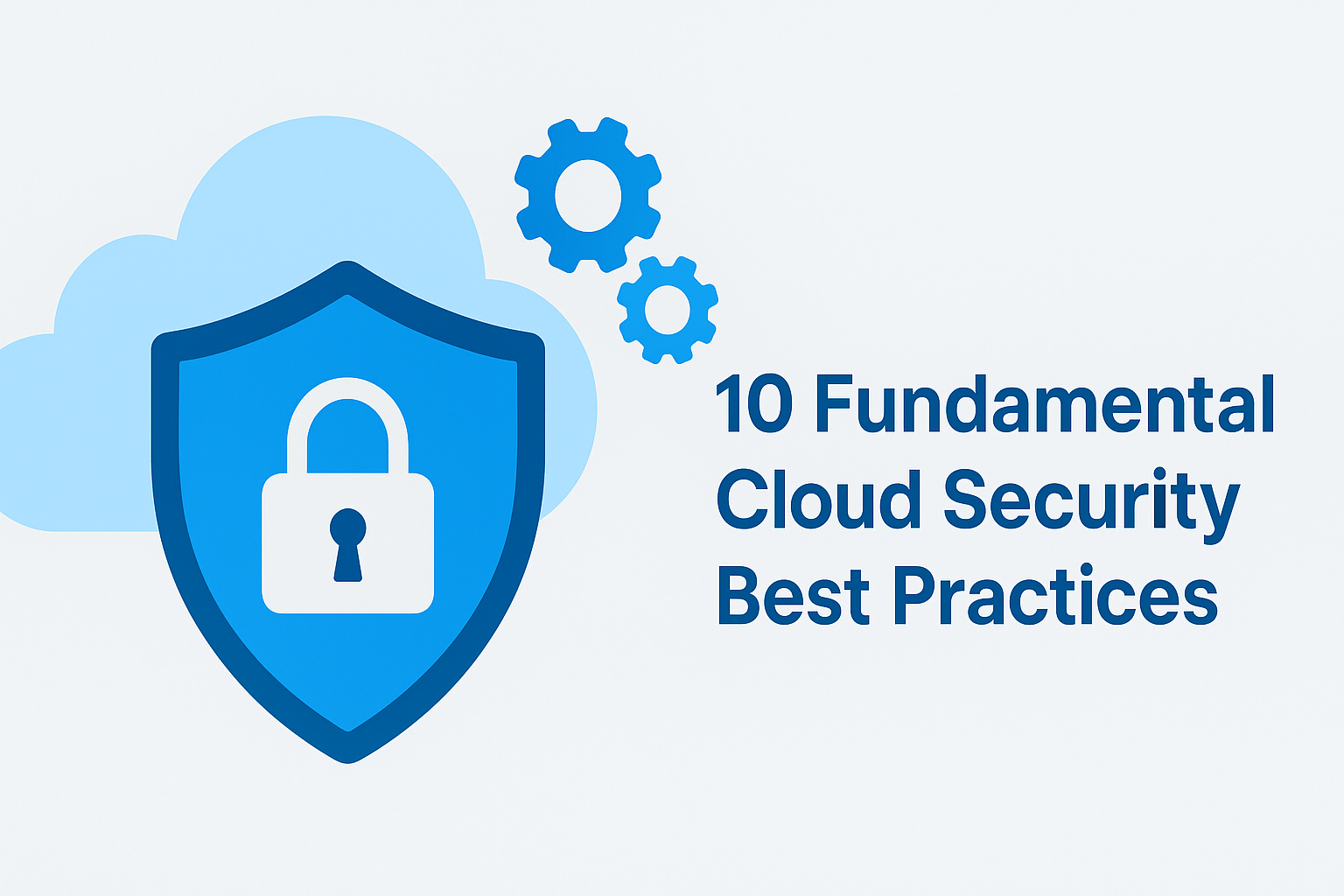As organizations rapidly migrate workloads to public and hybrid clouds, ensuring robust security in these dynamic environments is critical. Misconfigurations, unauthorized access, and lack of visibility can expose sensitive data and open the door to costly breaches. In this guide, we’ll explore ten essential best practices to lock down your cloud infrastructure, reduce risk, and maintain compliance.
1. Enforce Least-Privilege Identity & Access Management
- Use Role-Based Access Control (RBAC): Assign only the minimum permissions each user or service account needs.
- Enable Multi-Factor Authentication (MFA): Require MFA for all administrative and high-risk accounts to prevent credential compromise.
- Rotate and Audit Credentials: Automate key and password rotation, and regularly review audit logs for unusual sign-in patterns.
2. Encrypt Data at Rest and in Transit
- At Rest: Turn on provider-side encryption (e.g., AWS SSE-S3, Azure Storage Service Encryption) or manage your own keys via a KMS/HSM.
- In Transit: Enforce TLS/SSL for all web and API traffic—use HSTS headers and up-to-date certificates.
- Key Management: Store and rotate cryptographic keys securely; restrict access via IAM policies.
3. Harden and Automate Secure Configurations
- Baseline Images: Build hardened VM/container images with only necessary services installed.
- Infrastructure as Code: Use Terraform/ARM/Bicep with security-minded modules to prevent drift.
- Configuration Scanning: Integrate tools like AWS Config, Azure Policy, or CIS-Benchmark scanners to detect deviations.
4. Continuous Monitoring & Centralized Logging
- Log Aggregation: Forward all logs (cloud audit, application, network) to a centralized SIEM or logging platform.
- Alerting: Define thresholds and anomaly detection rules to notify on suspicious activity (e.g., privilege changes, abnormal API calls).
- Retention & Analysis: Keep logs for at least 90 days (or per compliance requirements) and regularly review for forensic readiness.
5. Network Segmentation & Micro-Segmentation
- Virtual Networks/Subnets: Separate workloads by environment (prod vs. dev) or compliance zone.
- Security Groups/NACLs: Lock down inbound/outbound traffic to only required ports and IP ranges.
- Service-Mesh or Micro-Segmentation: For containerized environments, use solutions like Istio or AWS App Mesh to enforce fine-grained policies between services.
6. Regular Vulnerability Scanning & Patch Management
- Automated Scans: Schedule weekly scans of VMs, containers and serverless functions using tools like Nessus, Qualys, or open-source scanners.
- Patch Cadence: Establish a monthly patch window for operating systems and dependencies—and a rapid response process for critical CVEs.
- Container Security: Scan container images at build time and runtime (e.g., Trivy, Aqua, Clair).
7. Backup, Disaster Recovery & High Availability
- Automated Backups: Configure daily snapshots of databases, storage volumes and critical configurations.
- Geo-Redundancy: Replicate data across regions for resilience against zone failures.
- Recovery Drills: Test restore procedures quarterly to validate RTO/RPO objectives.
8. Implement Cloud Security Posture Management (CSPM)
- Continuous Compliance Checks: Tools like Prisma Cloud or Wiz can automatically detect misconfigurations against frameworks (CIS, GDPR, HIPAA).
- Remediation Workflows: Integrate CSPM alerts into ticketing or DevOps pipelines for rapid fixes.
- Drift Detection: Get notified when manual changes deviate from your IaC definitions.
9. Adopt a Zero Trust Mindset
- Verify Before Trust: Authenticate and authorize every request, regardless of origin—“never trust, always verify.”
- Device/Posture Checks: Use endpoint posture agents to ensure only compliant devices can access sensitive workloads.
- Adaptive Access Policies: Grant temporary, conditional access based on risk signals (time, location, device health).
10. Conduct Regular Audits & Penetration Tests
- Annual Audits: Engage a qualified auditor for SOC 2, ISO 27001, or PCI-DSS reviews.
- Red-Team Exercises: Simulate adversary tactics to validate detection and response capabilities.
- Continuous Improvement: Incorporate lessons learned into security playbooks, training, and hardening guides.
Bringing It All Together
Cloud security isn’t a one-and-done project—it’s an ongoing process of prevention, detection, and response. By weaving these ten best practices into your DevOps pipelines, governance frameworks, and operational routines, you’ll build a resilient cloud environment that supports innovation without sacrificing safety.
Next Steps with BreachGuard
Ready to fortify your cloud deployments? BreachGuard offers:
- Cloud Security Architecture Reviews
- Automated Hardening & SecOps Integrations
- 24/7 Monitoring & Incident Response
- Compliance Readiness & Audit Support
→ Request Cloud Security Assessment today and let our experts help you architect, implement, and operate with confidence.

